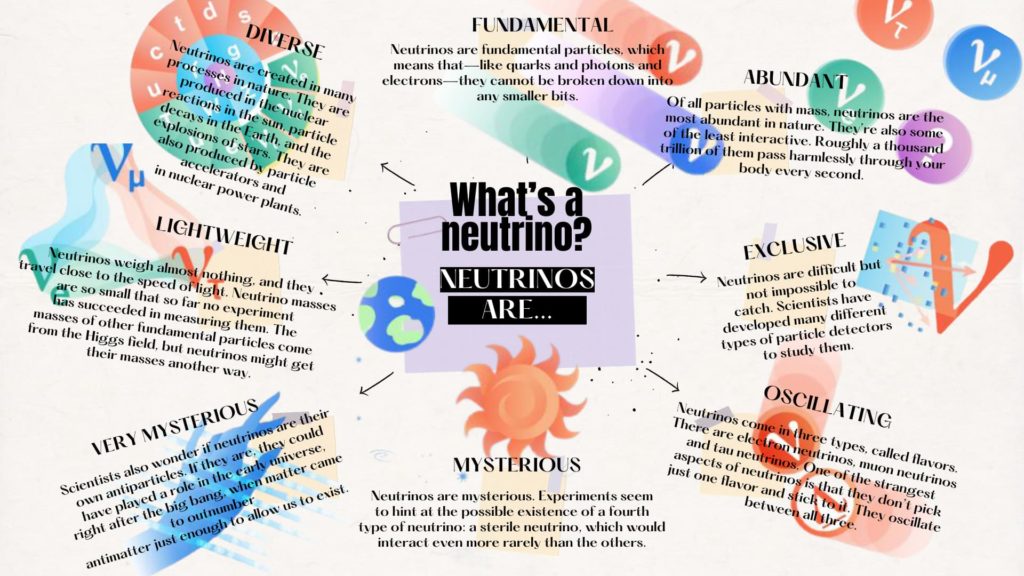It’s true that a neutrino is a particle! It’s one of the so-called fundamental particles, meaning it’s made up of no smaller components that we’re aware of. Neutrinos belong to the same family as the most well-known fundamental particle, the electron (which is currently powering the device you’re reading this on). Neutrinos, on the other hand, have no charge at all, whereas electrons have a negative charge.
Neutrinos are likewise extremely light and tiny. They have a small amount of mass. They are the lightest of all the mass-bearing subatomic particles. They’re also very common—in fact, they’re the universe’s most prevalent large particle. Neutrinos occur from a variety of places and are frequently the result of heavy particles decaying into lighter ones, a process known as “decay.”
These tiny particles have a fascinating backstory. They were predicted in 1930 but didn’t show up in testing until 1956, and scientists didn’t realize they were massless until much later. While we continue to learn more about neutrinos, new questions arise.
Neutrinos are also difficult to research. Gravity and the weak force, which is, well, weak, are the only ways they can interact. Because this weak force is only important over short distances, small neutrinos can pass through the atoms of big things without colliding. The vast majority of neutrinos will travel through Earth without interacting. Scientists develop massive detectors and create intense neutrino sources to boost the chances of spotting them.
Enrico Fermi, a physicist, popularized the term “neutrino,” which means “little neutral one” in Italian. The Greek letter v (pronounced “new”) is used to represent neutrinos. However, not all neutrinos are created equal. They come in a variety of shapes and sizes, as well as flavors, masses, and energies. Some of them are antimatter variants. There may even be neutrinos that have yet to be identified!
The following are ten brief facts about neutrinos:
- Every second, trillions of innocuous particles pass through you, whether it’s night or day
- They are the universe’s second most abundant particle (after particles of light called photons)
- Neutrinos rarely interact with matter; a lightyear of lead would only halt around half of the sun’s neutrinos
- The average room contains about 15 billion neutrinos from the Big Bang
- Neutrinos interact with each other exclusively through two of the four known forces: gravity and the weak force
- Scientists have identified three types of neutrinos so far: electron (e), muon (m), and tau (t)
- As they travel, they fluctuate or change flavor
- Their masses are extremely small, however they are unknown
- Their speed is very similar to that of light, but it is also unknown
- They could be the reason for the existence of matter in the cosmos


